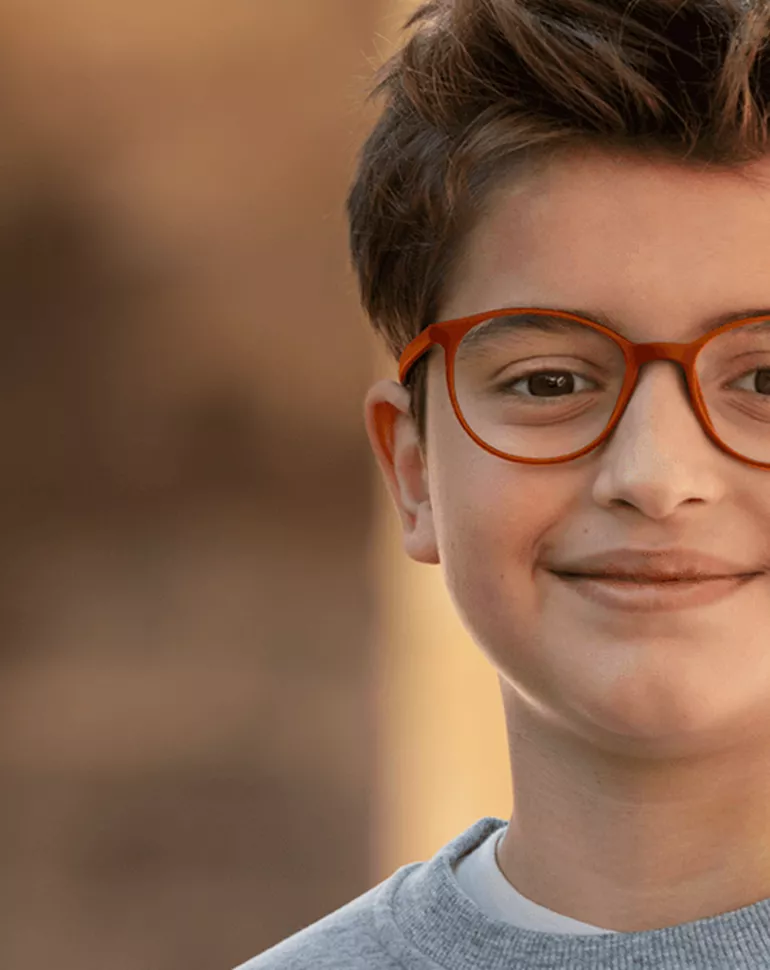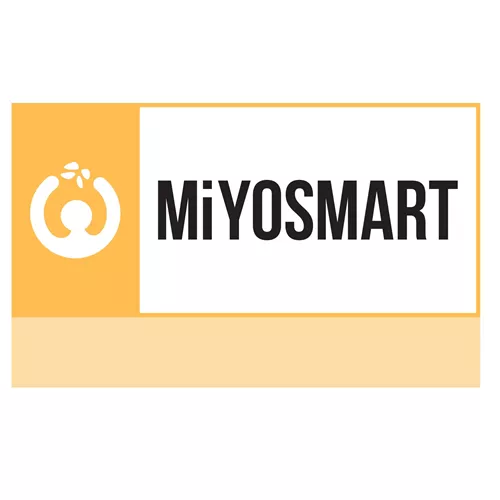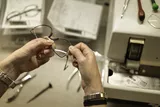Last updated: June 2025
MiYOSMART Spectacle Lenses - Confidence in prescribing, backed by evidence
MiYOSMART spectacle lenses are an innovative1 myopia management solution incorporating Defocus Incorporated Multiple Segment (D.I.M.S.) Technology based on solid peripheral hyperopic defocus theory. After 7 years on the market, the spectacle lenses are backed by a robust body of evidence, with over 90 scientific publications to-date. This article provides an overview of the robust MiYOSMART evidence base, with linked scientific publications for your convenience.
Our scientific partner: The Hong Kong Polytechnic University
HOYA Vision Care has been collaborating with The Hong Kong Polytechnic University research team for many years. Together, we developed D.I.M.S. Technology, which forms the basis for myopia management with MiYOSMART.
The Hong Kong Polytechnic University has an excellent reputation in the scientific field, with over 30 years of experience in myopia research. It is also one of the Top 100 universities worldwide.2 Six of their scientists are listed among the 200 internationally leading myopia researchers.3 In 2002, Professor Chi Ho To and Professor Carly Siu Yin Lam and their research team developed the Defocus Incorporated Soft Contact (DISC) lenses,4 one of the pioneering products for myopia control selling across China.
The theoretical fundamentals: peripheral hyperopic defocus theory
The peripheral hyperopic defocus theory suggested in the 1970s is the current, internationally accepted theory for explaining induced myopia progression due to single-vision spectacle lenses. This theory is based on various animal and human studies, which confirm that hyperopic defocus increases myopia progression, and thus supports myopic peripheral defocus as a viable treatment solution.5-8
The defocus theory is supported by leading researchers in the guidance from the European Ophthalmological Society and in the International Myopia Institute (IMI) White Paper, IMI - Report on Experimental Models of Emmetropization and Myopia.9,10
Further reading and summaries of the IMI White Papers, as well as their translations, can be found on the IMI website.10
Efficacy of MiYOSMART spectacle lenses
Numerous studies have demonstrated the effectiveness of MiYOSMART controlling myopia progression. A 2-year randomized controlled clinical trial conducted by Lam et al. (2020) found that D.I.M.S. Technology spectacle lenses slowed myopia progression by on average 60% compared to single-vision lenses.11 Subsequent follow-up studies carried out at the 3- and 6-year timepoints found sustained myopia control effects without rebound effect upon discontinuation.12,13 Results of an 8-year follow-up study show further long-term progression stability, with an average myopia progression of less than -0.5D over 8 years.14*
*Based on the results of 11 participants in the 8-year DIMS group who wore DIMS spectacle lenses for the entire 8 years.
MiYOSMART spectacle lenses have been shown to deliver effective myopia management for children of various ethnic backgrounds, having been studied in many Asian and European countries.11,15,16 MiYOSMART spectacle lenses effectively slowed down myopia progression in Caucasian children over 2 years.15,16 Compared with by-age and by-race model of untreated myopic eye growth, DIMS spectacle lenses effectively slowed eye growth in most UK children in both year 1 and year 2 wear.15,16
Recent studies have shown that the use of MiYOSMART spectacle lenses may reduce the cost of treating ocular complications in the future,17,18 and may reduce the development of severe vision impairment** by almost 20% over a lifetime.17,18
**defined as visual acuity worse than 20/200
Further papers verified the effectiveness of MiYOSMART, and the properties of D.I.M.S. Technology:
- Defocus Incorporated Multiple Segments Spectacle Lenses Changed the Relative Peripheral Refraction: A 2-Year Randomized Clinical Trial19
- Evaluation of an Optical Defocus Treatment for Myopia Progression Among Schoolchildren During the COVID-19 Pandemic20
- Myopia Control Effect Is Influenced by Baseline Relative Peripheral Refraction in Children Wearing Defocus Incorporated Multiple Segments (DIMS) Spectacle Lenses21
- One-year Efficacy of the Defocus Incorporated Multiple Segment Lens in Chinese Myopic Children22
- Changes in relative peripheral refraction in children who switched from single-vision lenses to Defocus Incorporated Multiple Segments lenses23
- The Efficacy of Defocus Incorporated Multiple Segments Lenses in Slowing Myopia Progression: Results from Diverse Clinical Circumstances224
- Age-matched analysis of axial length growth in myopic children wearing defocus incorporated multiple segments spectacle lenses225
- Effect of defocus incorporated multiple segments lenses on halting myopia progression not responding to low-concentration atropine (0.01%) eye drops26
- Overview on Defocus Incorporated Multiple Segments Lenses: A Novel Perspective in Myopia Progression Management27
Further research looking at cost-effectiveness:
- Cost-Effectiveness Analysis of Myopia Progression Interventions in Children28
High acceptance, tolerability and adaptability
Multiple papers discuss the safety and acceptance of the MiYOSMART spectacle lenses. Lam et al (2020) found that the DIMS spectacle lenses did not cause any adverse event on visual function,29 also supported by findings of Kaymak et al (2022).30 The adaptation and acceptance of MiYOSMART was also researched, finding that any visual adverse events were mild and transient.31 A further study showed that children’s vision-related quality of life while wearing MiYOSMART spectacle lenses is comparable to single vision spectacle lenses.32
A recent study found that most children and their parents prefer MiYOSMART spectacle lenses over atropine drops or contact lenses for myopia management, due to their non-invasive and convenient nature.33
Further research into the safety, tolerability and acceptance can be found below:
- Effects of Orthokeratology Lens Compared to Defocus Incorporated Multiple Segments Lens for Adolescent Myopia and Factors Related to Corneal Injury34
- Exploring the impact of optical corrections on visual functions in myopia control-a scoping review35
- Comparison of optical myopia control interventions: effect on peripheral image quality and vision36
MiYOSMART in the wider myopia management landscape
The MiYOSMART spectacle lenses entered the market in 2018, at a time when the need for more innovative solutions was at its peak. As such, there are many reviews and comparison studies involving the D.I.M.S. Technology spectacle lenses, which aim to guide prescribers to the most appropriate treatment solution for their young myopic patients.
The reviews exploring the myopia management landscape, as well as MiYOSMART’s place in the treatment paradigm can be found here:
- Effectiveness of peripheral defocus spectacle lenses in myopia control: a Meta-analysis and systematic review37
- Interventions for myopia control in children: a living systematic review and network meta‐analysis. Cochrane Database of Systematic Reviews 2023 38
- Efficacy in myopia control39
- Myopia Control: Are we ready for an evidence-based approach?40
- Effectiveness of myopia control interventions: A systematic review of 12 randomized control trials published between 2019 and 202141
- High myopia: Reviews of myopia control strategies and myopia complications42
- Preventing the Progression of Myopia in Children—A Review of the Past Decade43
- New Designs of Spectacle Lenses for the Control of Myopia Progression: A Scoping Review44
- Peripheral Defocus and Myopia Management: A Mini-Review45
Furthermore, there are multiple studies exploring MiYOSMART effectiveness and safety as compared to other treatment solutions:
- Myopia control: short term effect of 0.01% atropine vs. defocus incorporated multiple segment lenses—a retrospective study in European children46
- Comparison of myopic control between orthokeratology contact lenses and defocus incorporated multiple segments spectacle lenses47
- Different efficacy in myopia control: Comparison between orthokeratology and defocus-incorporated multiple segment lenses48
- Comparison of the long-term effects of atropine in combination with Orthokeratology and defocus incorporated multiple segment lenses for myopia control in Chinese children and adolescents49
- Effectiveness of orthokeratology and myopia control spectacles in a real-world setting in China50
- Comparing the effects of highly aspherical lenslets versus defocus incorporated multiple segment spectacle lenses on myopia control51
- Multiple segment spectacle lenses for myopia control. Part 2: Impact on myopia progression52
MiYOSMART in combination with atropine
Studies have shown that combining MiYOSMART spectacle lenses with low-dose atropine (0.01%) can enhance the myopia control effect.53-56 One study, published in 2023, showed that the combination treatment reduced axial elongation by 72% compared to single-vision lenses.53 Further research also suggests that MiYOSMART spectacle lenses are safe to be used in combination with low dose atropine, including when participating in road traffic.57
A more recent study showed that over 12 months approximately 2 out of 5 children treated with combination of MiYOSMART and 0.025% atropine eye drops had no myopia progression over 12 months.56
Optical and Imaging Properties of D.I.M.S. Technology
The development of D.I.M.S. Technology is grounded in robust theoretical and empirical research. The following studies provide a deeper understanding of the mechanisms and principles behind their design:
- Optical and imaging properties of a novel multi-segment spectacle lens designed to slow myopia progression58
- Multiple segment spectacle lenses for myopia control. Part 1: Optics59
- Multiple segment spectacle lenses for myopia control. Part 2: Impact on myopia progression60
- Modelling the refractive and imaging impact of multi-zone lenses utilised for myopia control in children's eyes61
- Retinal shadows produced by myopia control spectacles62
- Optical characterization of two novel myopia control spectacle lenses63
Conclusion: MiYOSMART is a safe and effective method of myopia management in children
Over 12 million MiYOSMART spectacle lenses have been sold globally, in over 40 countries.64-65 The currently published research results from a continuous commitment to provide robust and quality evidence to support MiYOSMART as an effective method for slowing down myopia progression.11-14
You can be confident that MiYOSMART spectacle lenses demonstrate:
- D.I.M.S Technology stemming from the widely accepted peripheral hyperopic defocus theory9,66
- Sustained long-term effectiveness with no rebound effect15,67-69
- High acceptance, tolerability and adaptability31,70 with no impact on social relationships or ability to spend time outdoors32,33
- Improved outcomes in combination treatment with atropine53,54,56,57
- Efficacy in children of different ethnicities and age groups11,15,16
HOYA Vision Care’s continuous commitment to providing new evidence supports eye care professionals in everyday practice to provide confident solutions for myopic children so they can live their brightest futures.
Further clinical studies are currently running. As soon as results are published, we will update our documentation and inform you. Our experts are happy to provide further information and are available to exchange of experiences.
Last updated: June 2025


